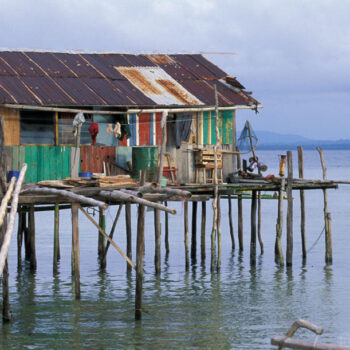The Boards of Governors of the International Monetary Fund (IMF) and the World Bank Group (WBG) are hosting their annual meeting this week in Washington DC. The same week, 200 miles up the coast at the UN in New York the Paris Agreement is coming into force earlier than anyone expected. The Governors meetings are an important opportunity to shape the development agenda. This year, if they’re to build a truly strategic program, they’ll need to consider what the fastest multilateral agreement ever ratified means for the forward operations of their institutions.
International Financial Institutions (IFIs) are responsible for deploying public capital in their citizens best interests. Given the particular role of the IFIs as standard setters of good quality development, these public financial institutions should be at the very forefront of delivering investments that align with the Paris Agreement and the Sustainable Development Goals. However, IFIs have a long way to go to fulfill this mandate – and investments in infrastructure show in particular how capital is not being deployed with citizens best interests in mind.
In the corridors of this year’s IMF/WBG meeting the buzz word is “infrastructure”, and rightly so. We all know that the infrastructure gap worldwide is daunting. It is estimated that investments of between US$ 5-7 trillion a year are needed to deliver the Sustainable Development Goals. Investments in clean energy, water, sanitation, agriculture, as well as many other sectors will all have to be made climate-compatible if we are to avoid dangerous global temperature increases above 1.5/2°C. In addition, given that some climate change is already inevitable, all infrastructure needs to be resilient to physical climate risk. Resilient to the type of weather events Haiti is experiencing with Hurricaine Matthew, the most powerful storm to hit the region in nearly 10 years and which has ripped through the country destroying bridges, roads and phone communications. It is only by ensuring that all new infrastructure is adapted to meet our new climate reality that IFIs can address growing levels of inequality, protect hard-won development gains and avoid people being driven back into poverty.
But despite the fact that it is well understood that high carbon and non-resilient infrastructure investments will undermine the future prosperity and economic stability of countries in which it is built, the need to ensure all infrastructure is low carbon climate-resilient is not yet a priority for IFIs. Such investments currently represent a marginal share of their total assets. According to the latest CPI report, in 2014 these institutions invested approximately $148bn in climate-compatible activities, a fraction of the $1.3tn of the total assets under management by just the top five IFIs.
Last year, six of the world’s largest IFIs, which were all multilateral development banks, committed to increase climate-compatible investments by 2020 to an average of 30% of each bank’s total portfolio. Work is now underway to define the principles by which climate finance will be mainstreamed across all operations. Ambition is too low. When it comes to infrastructure it’s critical that multilateral development banks align 100% of their portfolios with the needs of the climate agenda – and swiftly. The IEA has stated that to have a 50% chance of staying within a 2°C global temperature rise, only zero-carbon utilities and infrastructure should be developed beyond 2017. Given that infrastructure choices made today will last for many decades to come and could become stranded as governments tighten climate commitments and climate impacts increase, this means there is no longer a place for high carbon infrastructure in the portfolios of IFIs.
Their importance in driving this debate cannot be underestimated. In our current times of fiscal constraint faced by many governments, the role of IFIs in unlocking infrastructure investments is crucial. IFIs have the capacity to facilitate the flow of capital towards green investments by offering de-risking tools and leveraging private finance. They also have an important advisory role for governments thinking through their forward approaches to development at a country level. New approaches could include: helping member countries create investments plans for their climate commitments or NDCs or helping governments prioritise areas of support to deliver a wider green investment sector for a more dynamic economy and decrease national exposure to climate risk. This would also work to unlock a pipeline of projects required to deliver such objectives.
The question “How to mobilize investments at the scale required?” will be a central topic of conversation in DC. A question of equal significance is: “How to ensure that those investments are directed into low carbon and climate resilient infrastructure?” in order to secure a stable climate that can create the conditions for sustainable development. The IFIs have the experience and the expertise required to answer these questions. But turning words into actions will require an internally joined up approach that brings together the IFIs’ traditional infrastructure departments with departments focused on climate change, risk management and innovation.
What the IFIs need now is a clear signal from their boards (which are made up of country governments) that they must fundamentally redirect their focus to ensure all development is smart, low carbon inclusive and climate-resilient. The ministers of finance and development meeting in DC this week have the opportunity to start to make this a reality and – in the week the Paris Agreement is ratified – give a clear direction to the institutions they steer to support countries in this transition without delay.


